
Format: Paperback
Pages: 256
ISBN: 9781905119387
Pub Date: 30 Apr 2013
Illustrations: col illus
Description:
This book discusses the 19th-century historic landscape of Devon though the creation, manipulation and querying of a Geographical Information Systems (GIS) database to examine physical evidence of change and development through field and settlement patterns. Making use of tithe surveys, the relationship between field and settlement morphologies and patterns of landholding is discussed for three case-study areas in Devon, developing the idea of landscape pays and the identification of regional differences in the study of the historic landscape.
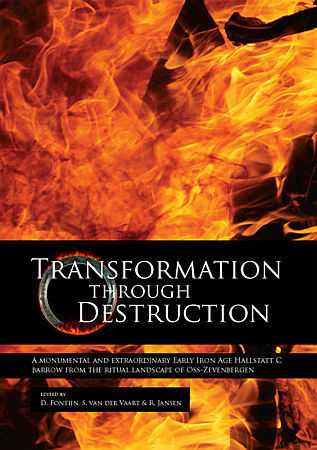
Format: Paperback
Pages: 348
ISBN: 9789088901027
Pub Date: 30 Apr 2013
Description:
Some 2800 years ago, a man died in what is now the municipality of Oss, the Netherlands. His death must have been a significant event in the life of local communities, for he received an extraordinary funeral, which ended with the construction of an impressive barrow. Based on the meticulous excavation and a range of specialist and comprehensive studies of finds, a prehistoric burial ritual now can be brought to life in surprising detail.
An Iron Age community used extraordinary objects that find their closest counterpart in the elite graves of the Hallstatt culture in Central Europe. This book will discuss how lavishly decorated items were dismantled and taken apart to be connected with the body of the deceased, all to be destroyed by fire. In what appears to be a meaningful pars pro toto ritual, the remains of his body, the pyre, and the objects were searched through and moved about, with various elements being manipulated, intentionally broken, and interred or removed. In essence, a person and a place were transformed through destruction. The book shows how the mourners carefully, almost lovingly covered the funeral remains with a barrow. Attention is also given to another remarkable monument, long mound 6, located immediately adjacent to mound 7. Excavations show how mound 7 was part of an age-old ritual heath landscape that was entirely restructured during the Early Iron Age, when it became the setting for the building of no less than three huge Hallstatt C barrows. Thousands of years later, during the Late Middle Ages, this landscape underwent a complete transformation of meaning when the prehistoric barrows became the scenery for a macabre display of the cadavers of executed criminals.This publication is part of the Ancestral Mounds Research Project of the University of Leiden.
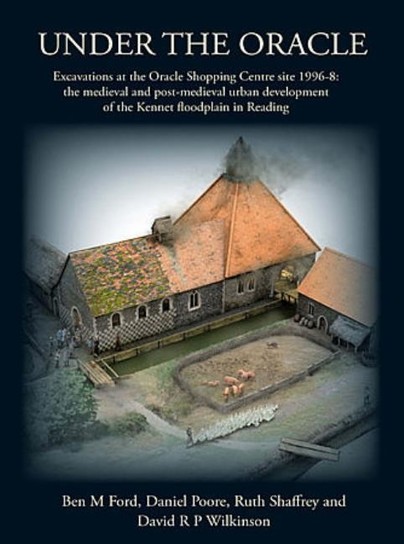
Format: Hardback
Pages: 340
ISBN: 9781905905270
Pub Date: 01 Apr 2013
Series: Thames Valley Landscapes Monograph
Description:
Excavations carried out by Oxford Archaeology in advance of the building of the Oracle shopping centre revealed a long sequence of development of the Kennet floodplain at Reading. This volume reports on the substantial evidence recovered for medieval and post-medieval water management, milling at the Minster Mill and St Giles Mill, the tanning, leather working and dyeing industries, and an unusual building interpreted as the 12th- to 13th-century cookhouse of Reading Abbey. The stories of two well-known Reading sites, the Oracle Workhouse and the Yield Hall, are followed from the medieval period up to the 19th century.
Substantial specialist reports include pottery, glass, leatherworking, dendrochronology and clay pipes.

Format: Paperback
Pages: 144
ISBN: 9780955353444
Pub Date: 31 Mar 2013
Illustrations: 13 b/w and 41 colour illustrations
Description:
This volume contains the results of four archaeological projects undertaken within the historic suburbs of Bristol. Excavations at nos 26–28 and at nos 55–60 St Thomas Street were both within the 12th-century planned suburb of Redcliffe, just to the southeast of the medieval city. Investigations at Harbourside and at Cabot House, Deanery Road, were undertaken in the medieval district of Billeswick, to the southwest of the city centre and in the vicinity of Bristol Cathedral, formerly the church of the 12th-century St Augustine’s Abbey.
However, it is the general lack of evidence for significant development at these sites throughout the medieval and post-medieval periods and up to the beginning of the 18th century that provides a common theme.The scarcity of evidence for medieval and post-medieval development at the Billeswick sites, Cabot House and Harbourside, is unsurprising as both were in the ownership of the abbey or cathedral throughout this period, and were clearly of value as undeveloped land, either as parkland (as at Cabot House) or meadow (i.e. Canon’s Marsh at Harbourside). The dearth of evidence from the St Thomas Street sites in Redcliffe was more unexpected, though this appears to corroborate documentary evidence suggesting that this part of the suburb remained something of a backwater into late post-medieval times. At nos 55–60, there was little evidence for anything more substantial than simple boundaries and timber structures, perhaps used for drying cloth, until the beginning of the 18th century. At nos 26–28 there was no evidence for tenements until late into the post-medieval period and the site may well have been part of a medieval grange. The development of the first substantial buildings at both St Thomas Street sites, of new streets and terraces at Cabot House, and of the ropewalks and later industrial development of Canon’s Marsh at Harbourside, all reflect the rapid expansion and building boom Bristol enjoyed in the 18th century, largely a result of the city’s involvement in the Atlantic trade.
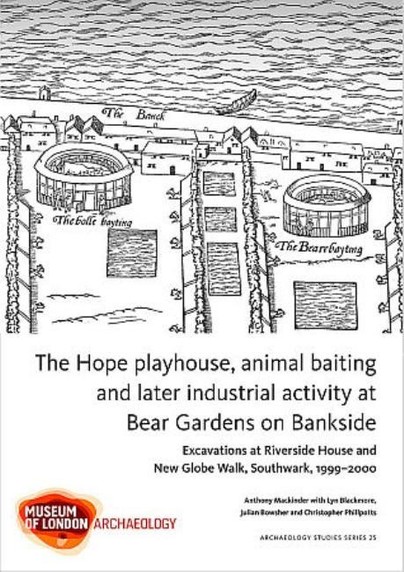
Format: Paperback
Pages: 94
ISBN: 9781907586200
Pub Date: 31 Mar 2013
Series: MoLAS Archaeology Studies Series
Description:
Southwark’s famous Bankside was long known as an entertainment area up to the 17th century. This volume provides evidence for the Barge, one of the medieval stewhouses (tavern/brothel) and the later Hope, a dual purpose building hosting animal baiting as well as play performances. The next phase in Bankside’s history was industrial and its glass and pottery products of the 17th and 18th centuries were much sought after.
Evidence for their production was found on the sites. The remains of 19th-century brick buildings relate to a known iron foundry in the area.

Format: Hardback
Pages: 272
ISBN: 9781842175101
Pub Date: 08 Mar 2013
Description:
Fifteen papers present the results of new research into various aspects of material culture and historical archaeology that reflect culture, trade and social interaction shared by Britain and Colonial America during the Tudor and Stuart periods. Recurrent themes include the use, significance and, in some cases, trade in specific types of pottery, including the ubiquitous stoneware flasks or canteens for sailors and solders on both sides of the Atlantic, and commodities such as wine and copper objects; the architectural history of manor houses and archaeology of plantations; aspects of the historical archaeology of Jamestown and Martins Hundred; the role of specific individuals in the development of Tudor-Stuart life and our new understand of a London destroyed the Great Fire based on Noel Humes rescue digs in a London destroyed by the Blitz. Overall the papers reflect the wide-ranging interests of Ivor Noël Hume, to whom the volume is dedicated.

Format: Paperback
Pages: 88
ISBN: 9781782971443
Pub Date: 07 Mar 2013
Series: Archaeology Data Service & Digital Antiquity Guides to Good Practice
Description:
Anyone who has tried to archive archaeological geophysics data will have wondered what might be the most comprehensive and practical approach. This question is addressed by this Guide’s extensively revised 2nd edition, which systematically explores what should be included in an Archive, illustrated with relevant examples. A conceptual framework is developed that allows assembling data and meta-data so that they can be deposited with an Archiving Body.
This framework is also mapped onto typical database structures, including OASIS and the English Heritage Geophysics Database. Examples show step-by step how an Archive can be compiled for deposition so that readers will be able to enhance their own archiving practice. Geophysical data are sometimes the only remaining record of buried archaeological features when these are destroyed during commercial developments (e.g. road schemes). To preserve them in an Archive can therefore be essential. However, it is important that data are made available in formats that can still be read in years to come, accompanied by documentation that gives meaningful archaeological context. This Guide covers the creation of the necessary metadata and data documentation. There is no point preserving data if they cannot be used again; therefore this Guide is essential for anyone using geophysical data.
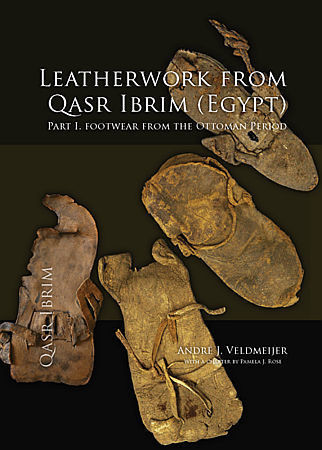
Format: Paperback
Pages: 462
ISBN: 9789088900969
Pub Date: 28 Feb 2013
Description:
Throughout its long history, stretching from the 25th Dynasty (c. 752-656 BC) to the Ottoman Period (c. 1500-1811 AD), Qasr Ibrim was one of the most important settlements in Egyptian Nubia.
The site has produced an unprecedented wealth of material and due to the – even for Egypt – extraordinary preservation circumstances, includes objects that are made of perishable organic materials, such as wood, leather, and flax.The present volume focuses on one of these groups: footwear that is made from leather and dated to the Ottoman Period. The footwear, recovered during the years that the Egypt Exploration Society worked at the site, is described in detail, including a pictorial record consisting of photographs and drawings (both technical and artist’s impressions). This is the first time that Ottoman footwear from Egypt (and outside of Egypt) has been analyzed in detail. The preliminary analysis focuses on footwear technology, within the framework of the Ancient Egyptian Footwear Project (AEFP; see www.leatherandshoes.nl). A broader interpretation will be combined with the results of the analyses of the finds from the other epochs of Qasr Ibrim’s history, such as the age of Christianity and the Meroitic Period.

Format: Paperback
Pages: 272
ISBN: 9781902771939
Pub Date: 28 Feb 2013
Description:
This volume presents the conclusions of a research assessment funded by English Heritage which drew together the broad community of scholars interested in marine and maritime affairs, with a remit of both quantifying the known record and establishing a clear research agenda for the future. The result is an unrivalled exploration of our maritime heritage and a challenging agenda for the future.Britain is a maritime nation.
Thus understanding the changing record of people&supl;s relationships with, and use of the sea is key to interpreting the archaeological record. People and the Sea considers all aspects of our maritime heritage; from the submerged landscapes created by changes in sea- level over the last million years, to the physical development of the modern coastline, through to ports, their hinterlands and associated maritime communities. It investigates the nature of seafaring, its associated material culture as well as people&supl;s changing perceptions and interactions with the sea. Chronological chapters, from the Palaeolithic to the 20th century, all consider a number of key themes, exploring both the current state of knowledge and priorities for future research. While the focus is on England, the themes explored are applicable to any coastal community, both in the UK and the near Continent. Written by leading academics, in consultation with numerous specialists, People and the Sea provides an unrivalled exploration of our maritime heritage and sets a challenging agenda for future research.
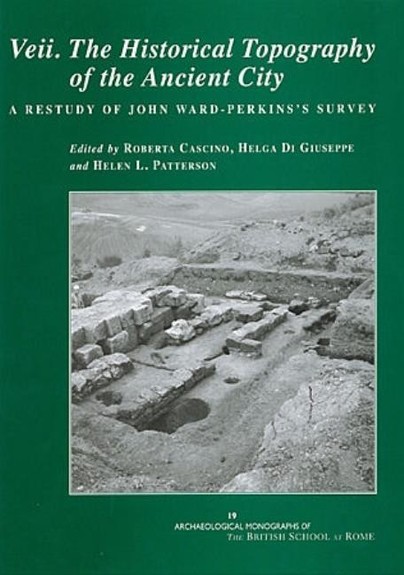
Format: Hardback
Pages: 432
ISBN: 9780904152630
Pub Date: 21 Feb 2013
Series: Archaeological Monographs of the British School at Rome
Illustrations: 142 illus, 2 colour plates
Description:
During the nineteenth century, antiquarians such as William Gell and George Dennis visited the ancient city of Veii, some 15 km north of Rome, and noted the rapid destruction of its archaeology. The city continued under to be under threat, and in the 1950s was the subject of ground-breaking survey and excavation by John Ward-Perkins. However, the results of his fieldwork were never published fully.
Knowledge and understanding of material culture (especially pottery, votive objects and architectural terracottas) has increased dramatically over the past fifty years, so allowing the authors to reveal the full potential of the data. This publication reaffirms many of Ward-Perkins’s original insights, and contextualizes his research within the new discoveries of the past fifty years; whilst an important contribution to our knowledge, it is also a spur to further work.
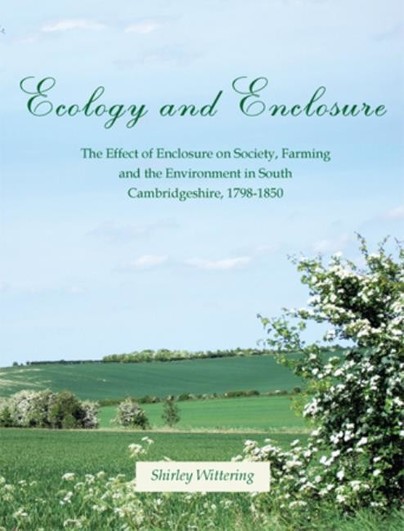
Format: Paperback
Pages: 192
ISBN: 9781905119448
Pub Date: 07 Feb 2013
Description:
South Cambridgeshire has some of the richest arable land in England and has been cultivated for millennia. By the turn of the nineteenth century industrialisation and massive population growth had resulted in an enormous increase in the demand for food, which in turn led to enclosure. But this desire to plough every available piece of land resulted in the destruction of many valuable and distinctive habitats that had existed for centuries.
The Ecology of Enclosure breaks new ground in comparing the effect of Parliamentary Enclosure with the findings of the enthusiastic 'Botanisers' from Cambridge; this reveals not only the effect of enclosure on the ecology of the land but also on the people whose link with the land was broken. The first section presents a study of social and agricultural life before enclosure, describing geology and climate; the fold-course open field system of farming and the strict stinting rules which governed how land could be used for grazing and stock movement; and the crop rotation systems employed. The second part describes the process of enclosure, including opposition to it; the changes that occurred to the landscape and within village communities as work in industry gradually replaced rural occupations; the effects of fencing on movement; and of the loss of common land to the plough. The third section is an analysis of the new study of Botany which the University of Cambridge was enjoying in the eighteenth and nineteenth centuries based on their own records and a review of some of the specific effects on the flora and fauna of the area.

Format: Paperback
Pages: 416
ISBN: 9781905119455
Pub Date: 07 Feb 2013
Illustrations: 233 illus
Description:
An original and approachable account of how archaeology can tell the story of the English village. Shapwick lies in the middle of Somerset, next to the important monastic centre of Glastonbury: the abbey owned the manor for 800 years from the 8th to the 16th century and its abbots and officials had a great influence on the lives of the peasants who lived there. It is possible that abbot Dunstan, one of the great reformers of tenth century monasticism directed the planning of the village.
The Shapwick Project examined the development and history of an English parish and village over a ten thousand-year period. This was a truly multi-disciplinary project. Not only were a battery of archaeological and historical techniques explored - such as field walking, test-pitting, archaeological excavation, aerial reconnaissance, documentary research and cartographic analysis - but numerous other techniques such as building analysis, dendrochronological dating and soil analysis were undertaken on a large scale. The result is a fascinating study about how the community lived and prospered in Shapwick. In addition we learn how a group of enthusiastic and dedicated scholars unravelled this story. As such there is much here to inspire and enthuse others who might want to embark on a landscape study of a parish or village area. Seven of the ten chapters begin with a fictional vignette to bring the story of the village to life. Text-boxes elucidate re-occurring themes and techniques. Extensively illustrated in colour including 100 full page images.This title was the winner of the 2014 British Archaeological Association's Best Archaeological Book Award.
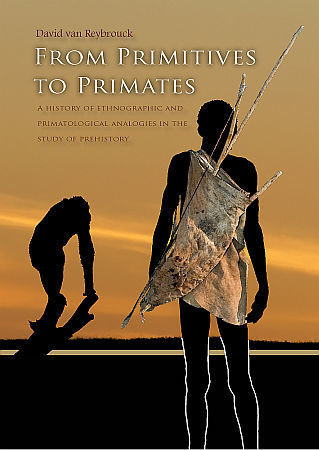
Format: Paperback
Pages: 384
ISBN: 9789088900952
Pub Date: 31 Jan 2013
Description:
Where do our images about early hominids come from? In this fascinating in-depth study, David Van Reybrouck demonstrates how input from ethnography and primatology has deeply influenced our visions about the past from the 19th century to this day – often far beyond the available evidence. Victorian scholars were keen to look at contemporary Australian and Tasmanian aboriginals to understand the enigmatic Neanderthal fossils.
Likewise, today’s primatologists debate to what extent bonobos, baboons or chimps may be regarded as stand-ins for early human ancestors. The belief that the contemporary world provides ‘living links’ still goes strong. Such primate models, Van Reybrouck argues, continue the highly problematic ‘comparative method’ of the Victorian times. He goes on to show how the field of ethnoarchaeology has succeeded in circumventing the major pitfalls of such analogical reasoning.A truly interdisciplinary study, this work shows how scholars working in different fields can effectively improve their methods for interpreting the deep past by understanding the historical challenges of adjacent disciplines.Overviewing two centuries of intellectual debate in fields as diverse as archaeology, ethnography and primatology, Van Reybrouck’s book is one long plea for trying to understand the past on its own terms, rather than as facile projections from the present.David Van Reybrouck (Bruges, 1971) was trained as an archaeologist at the universities of Leuven, Cambridge and Leiden. Before becoming a highly successful literary author (The Plague, Mission, Congo…), he worked as a historian of ideas. For more than twelve years, he was co-editor of Archaeological Dialogues. In 2011-12, he held the prestigious Cleveringa Chair at the University of Leiden.
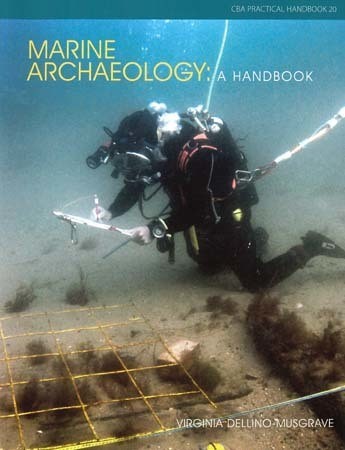
Format: Paperback
Pages: 110
ISBN: 9781902771915
Pub Date: 31 Jan 2013
Series: CBA Practical Handbook
Description:
Marine Archaeology: A Handbook aims to give easy access to a range of information about the marine historic environment. It provides a useful guide for all those involved in the marine environment, from local authorities to recreational divers and interested amateurs. In recent years there has been increased awareness of both the potential and the fragility of the marine and maritime zones.
Working in these zones presents a range of challenges, from the practical to the legal, which this Handbook attempts to explain.The book begins by defining what the marine environment is, and provides a brief history of maritime archaeology. It also considers the challenging question of the differences between marine archaeology and commercial salvage. Further chapters explain the organisation of marine archaeology in the UK and the planning of marine archaeological projects, with essential information on areas of responsibility and sources of information. A summary of the complex legal framework for the management of the marine zone around the UK is followed by discussion of European and UNESCO conventions on marine heritage. A glossary and extensive bibliography make this book essential reading for all amateurs and professionals with an interest in our marine historic environment.
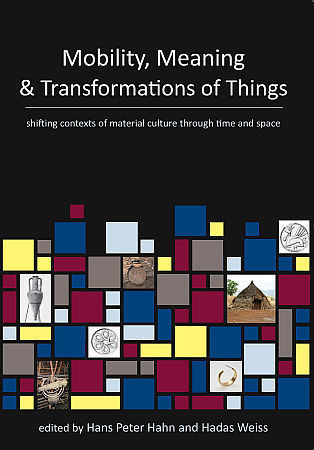
Format: Paperback
Pages: 176
ISBN: 9781842175255
Pub Date: 31 Jan 2013
Illustrations: b/w illus
Description:
Things travel around the globe: they are shipped as mass consumer goods, or transported as souvenirs or gifts. There are infinite ways for things to be mobile, not only in the era of globalisation but since the beginning of time, as the earliest traces of long distance trading show. This book investigates the mobility of things from archaeological and anthropological perspectives.
Material Objects are characterised by temporal continuity, embodying a prior existence with lingering effects. Yet the material continuity disguises the transformations they may undergo, which only become evident upon closer examination. Objects are in perpetual flux, leaving visible traces of their age, usage, and previous life. While travelling through time, objects also circulate through space, and their spatial mobility alters their meaning and use with respect to new cultural horizons. As objects transform through time and space, so does the value attributed to them. Mapping out itineraries of value in the realm of the material, allows us to grasp the nature of a given social formation through the shape and meaning taken on by its valued 'stuff'. It also provides insights into the nature of materiality, through the value ascribed to objects at a given point in time and space. This edited volume brings together studies of material culture, materiality and value, with regard to the mobility of objects, with the aim of tracing the ways in which societies constitute their valued objects and how the realm of the material reflects upon society.
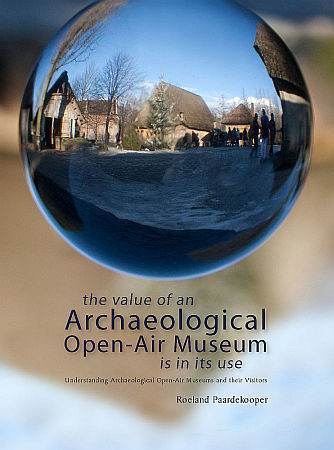
Format: Paperback
Pages: 300
ISBN: 9789088901034
Pub Date: 31 Jan 2013
Description:
There are about 300 archaeological open-air museums in Europe. Their history goes from Romanticism up to modern-day tourism. With the majority dating to the past 30 years, they do more than simply present (re)constructed outdoor sceneries based on archaeology.
They have an important role as education facilities and many showcase archaeology in a variety of ways. Compared to other museum categories, archaeological open-air museums boast a wide variety of manifestations.This research assesses the value of archaeological open-air museums, their management and their visitors, and is the first to do so in such breadth and detail. After a literature study and general data collection among 199 of such museums in Europe, eight archaeological open-air museums from different countries were selected as case studies. They included museums in a very varied state with different balances between public versus private funding levels on the one hand, and on the other the proportion of private individuals to educational groups among their visitors.The issue of ‘quality’ was investigated from different perspectives. The quality as assessed by the museum management was recorded in a management survey; the quality as experienced by their visitors was also recorded using a survey. In addition on-site observations were recorded. Management and visitors have different perspectives leading to different priorities and appreciation levels.The studies conclude with recommendations, ideas and strategies which are applicable not just to the eight archaeological open-air museums under study, but to any such museum in general. The recommendations are divided into the six categories of management, staff, collections, marketing, interpretation and the visitors. They are designed to be informative statements of use to managers across the sector.

















